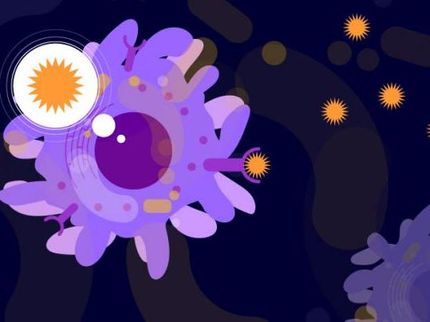Leprosy Microbes Lead Scientists to Immune Discovery
With the unusual opportunity that human leprosy infections provide for study of human immune responses, scientists have discovered how the body's early warning system prompts a rapid immune response by two separate armies of defensive cells. The finding helps explain why, when threatened by microbes like the leprosy bug, this initial defense sometimes succeeds in limiting the damage, but in other cases yields to a dangerous, spreading infection.
Led by Stephan R. Krutzik of UCLA, a team of scientists that includes Barry R. Bloom, Dean of the Harvard School of Public Health, reported the work on May 8 in an advance online publication of Nature Medicine.
The researchers isolated immune cells in blood samples from healthy people and exposed the cells to a component of mycobacteria. The large white blood cells known as monocytes rapidly differentiated into the two distinct cell types, forming the body's emergency response to the detection of foreign bacteria. One category of defensive cells, macrophages, seek out and engulf the infectious bugs. The other group consists of dendritic, or "antigen-presenting" cells, which seize distinctive pieces of the enemy and use them to "educate" and stir up a second immune response, known as "adaptive" immunity.
Until now, laboratory dish experiments hadn't revealed that the instantaneous or "innate" immune reaction-discovered less than 10 years ago-is mounted by two differently-specialized cells. It had been thought that the initially responding cells were uniformly macrophages, equipped for the two roles. The innate response swings into action when invading microbes are detected by molecules called Toll-like receptors (TLRs) that stick out of the cell's outer membrane, serving as a trip-wire to raise the alarm. The TLRs spur the monocytes to differentiate into the two rapid response cell types.
Why this matters became strikingly clear when the scientists studied different forms of leprosy for the presence of the two cell types. (One of the types, the microbe-eating macrophages, is labeled DC-SIGN+, while the other, the antigen-presenting dendritic cells, are termed CD1b+). In people who have the form of leprosy known as tuberculoid, or T-lep, the body has made a strong immune response and the infection stays localized to the skin. In patients with lepromatous leprosy, or L-lep, the bacteria have overwhelmed the immune defenses and can spread along nerves throughout the body and may cause blindness.
The scientists found DC-SIGN+ macrophages in both types of leprosy infections. The CD1b+ cells were present only in the milder form, indicating a successful battle against the leprosy bacterium. They were missing, however, in the more severe leprosy infections, meaning that the monocytes hadn't succeeded in producing those key anti-bacterial fighters.
"The logic here is that because their monocytes are unable to produce the [CD1b+] cells that can mobilize T-cells, these people don't respond well and become much sicker," commented Bloom. "This research gives us insights about how the body develops protective immunity against bugs that invade our cells-or fails to. Now we know the players, and we would love to look at them in other diseases such as tuberculosis in the lungs and juvenile diabetes."
Topics
Organizations
Other news from the department science

Get the life science industry in your inbox
By submitting this form you agree that LUMITOS AG will send you the newsletter(s) selected above by email. Your data will not be passed on to third parties. Your data will be stored and processed in accordance with our data protection regulations. LUMITOS may contact you by email for the purpose of advertising or market and opinion surveys. You can revoke your consent at any time without giving reasons to LUMITOS AG, Ernst-Augustin-Str. 2, 12489 Berlin, Germany or by e-mail at revoke@lumitos.com with effect for the future. In addition, each email contains a link to unsubscribe from the corresponding newsletter.
More news from our other portals
Last viewed contents
Prexton Therapeutics raises €8.7 million ($10 million) in a Series A round

Cooperation of Ghost-Driving Genes - A groundbreaking study makes a decisive contribution to understanding how genes are regulated
Francisco Partners to Acquire STARLIMS
Merck Reaches Mutual Agreement with Ono Pharmaceutical to Terminate the License Agreement on Ceralifimod
Eden Biodesign advances toward establishing its U.S. operation - Michael Faughnan appointed as Business Development Director
Archemix Announces Collaboration with Pfizer to Discover Aptamer Therapeutics
OncoMethylome Appoints New Board Director and New COO
Organizational changes at Bayer HealthCare - Streamlining administration, strengthening research and development

BATIST s.r.o. - Červený Kostelec, Czechia



















































